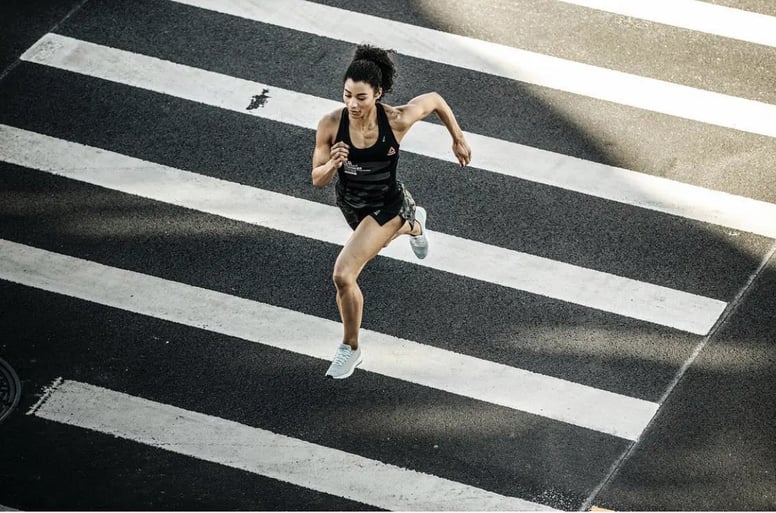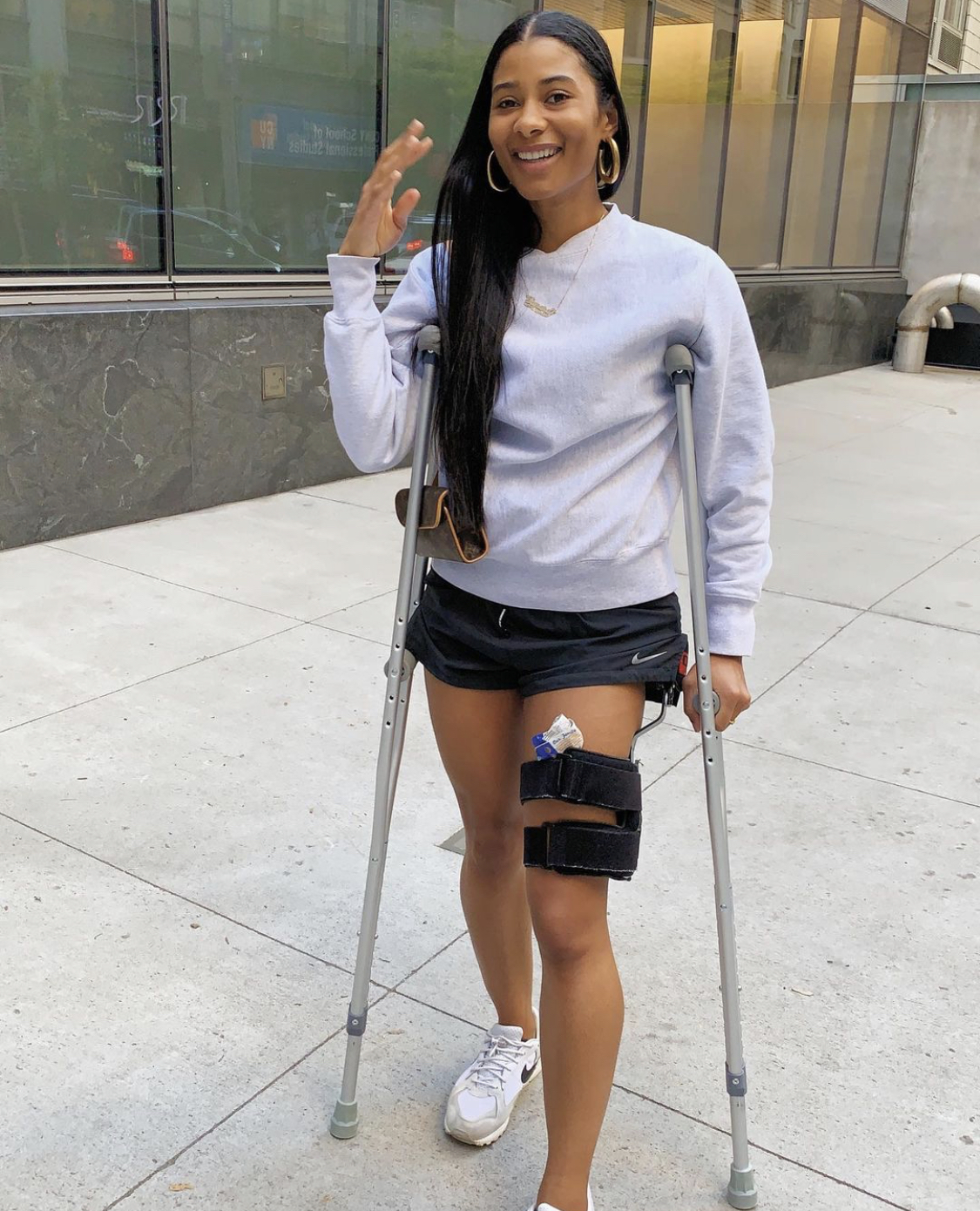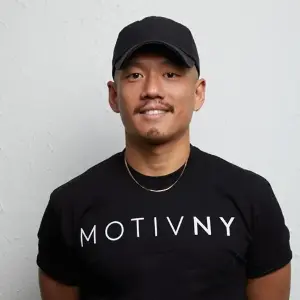Athlete Highlight: Tamara Pridgett
February 23, 2021
Tamara Pridgett overcame both mental and physical roadblocks to get to where she is now. After a year of rehab from hip surgery, she's fully recovered and more focused than ever to perform at a high level again. See what she had to say about her process and how she got back to running on the streets of NYC.

Did you find track & field, or did track & field find you?
I’d like to think it was serendipitous. At my elementary school, we had an after-school program called Extended Day, and essentially it was an opportunity for students to explore various extracurricular activities from the fine arts to sport until our parents got off of work. I always did keyboard, dance, and when I saw track was an option, I signed up. I tried every event and was a natural, and the rest is history.
You were once an elite collegiate track & field athlete, now trainer and writer. Can you tell us more about what you do and maybe what you’re getting into?
I’m a multi-hyphenate badass. My full-time gig is the beauty and fitness editor for Well+Good. I started personal training in 2015, but I’ve scaled back because I had invasive hip surgery in 2019 and then the pandemic hit shortly after. Right now, I’m focusing my energy on Extended Day, my creative studio focused on sport and fitness and storytelling through movement. I’m also creating a wellness platform that centers BIPOC and provides people with quality, affordable access to all things fitness and wellness. Athletically, I’m training for the heptathlon.
Heptathlon? What’s that?
The heptathlon is one of the many track and field events for women. It consists of seven disciplines — 100m hurdles, high jump, shot put, 200 meters, long jump, javelin, and 800 meters — and is carried out over the span of two days.

You had hip surgery in 2019, how has that shifted your plans to become a Hep athlete?
Hip surgery was definitely not in my plans, in general, but it was one of the most beautiful experiences of my life. I often compare it to what I imagine childbirth to be like where you’ve eliminated all the distractions and you’re just focused on nurturing and caring for your baby, but in my case, I was the baby. During the initial months, I couldn’t do anything — I’ll never forget having to be helped when showering, using the restroom, and getting dressed — and that stillness and period of rest was a blessing. I spent a lot of time with myself, I reconnected with myself and became much more intentional with everything. That time was another reminder of how important it is to pursue the things on your heart and not delay them, and I was finally in a space to listen.
Mentally, it was a beautiful period. I think most people, especially athletes, are anxious and try to fast-track returning to training but I was the exact opposite. I wasn’t in any rush to return to my old way of living or physical activity. I was exhausted emotionally, mentally, and physically. This surgery happened exactly when it should have and, as a result, it not only allowed me to heal physically but emotionally, which has translated to all aspects of my life. I don’t think I would be able to take on such a large feat as training for the hep emotionally or physically without having gone through that experience.
For those that don’t know about the post-op hip rehab process, can you elaborate on some of the steps you took to get to where you are now?
First, I have to start with the daunting process of getting a diagnosis leading up to surgery. Because of racism and the inequality in healthcare, Black women are notoriously ignored, dismissed, and told that what we are experiencing isn’t severe or real — just look at Serena Williams’, Beyonce’s, and Allyson Felix’s pregnancy stories. I was told by countless “professionals” that there was nothing wrong with me and what I was experiencing was just soreness. They had never done any tests to come to this conclusion, they simply moved my leg around a few times and determined I was fine.
As an athlete and someone extremely in tune with their body, I knew they were wrong and knew I had a torn labrum as soon as I felt pain. After months of physical therapy and numerous appointments with more “experts,” I forced a doctor to order an MRI, and it showed that I did in fact have a labral tear. I once again returned to PT but after months of no improvement, I stopped working with them and began to explore my other options.
I got a cortisone shot, which did nothing, and also considered PRP. Fortunately, around the same time and after weeks of spending my days performing Google searches and scrolling through hospital lists of experts, I found a surgeon who specialized in sports performance. After speaking with him, he confirmed my injury and said surgery was my best option if I wanted to be active on any level.
That experience was beyond depressing and exhausting, and I’m so glad for my knowledge of the body and that I could advocate for myself because unfortunately, many are unable to do so when they’re in these situations. Moral of the story: advocate for yourself and your health, always, no matter how tiring or frustrating it may be because you know your body better than anyone.
How did you finally decide to get surgery?
I knew I needed surgery from the jump, and after going through months of conservative PT that wasn’t improving my condition, and being unable to walk without pain or limping, I knew that was my only option. After finding my surgeon, doing more imaging, and talking to him about my performance goals, we agreed surgery was the best option. That was the first time I felt like someone was listening to me and providing me with answers, and I was confident in him. I wasn’t scared at all about having surgery, in fact, I was at peace.
How did you find physical therapy?
I love taking care of my body, and being a collegiate athlete definitely spoiled me. I was accustomed to weekly massages and access to therapists 24/7. I love knowing that my body is functioning at an optimal level, or at least being on the path to achieving that, so naturally I love physical therapy.
After dealing with multiple therapists at the hospital I had surgery at who didn’t believe me, I decided not to work with them again. Post-op, I was working with a new therapist at the same facility, but after about two months, I realized that he didn’t have a plan and what I was doing wasn’t helping me progress through recovery like I believed I should be and ultimately, wasn’t going to help me achieve my day-to-day and performance goals. I had seen friends posting about MOTIVNY in the past, and after telling a friend that I was frustrated with my PT, he recommended MOTIVNY so I felt like it was a sign to reach out — now, I'm a legacy client, lol.
If you went back in time, how would you have changed the process?
I would have been even more aggressive and demanded that the professionals I was working with take every measure to determine the source of pain and come up with a plan to eliminate it. I would also have brought up their inability and unwillingness to take my concerns seriously with directors at the hospital and those who oversaw the therapists and doctors I worked with to ensure that what I experienced never happens again.
Can’t imagine the mental challenges that you went through during quarantine while rehabbing. How did you manage? What helped you the most?
I’ve had my fair share of highs and lows throughout this quarantine period. When the city first closed down, I was extremely stressed because I was still in the beginning stages of recovery and really depended on PT to help manage my pain. At that time, I couldn’t do much on my own with where I was at in the recovery process and felt completely hopeless. Not to mention, at this point, I was by myself and just felt sad and like I had no one to share any of this with or anyone to really understand what I was experiencing.
I still have days where I’m frustrated because I don’t have the equipment I need/want or the weather isn’t ideal to do my recovery work or exercise, but at the end of the day, I’m beyond grateful for my health and having a roof over my head.
I find myself constantly returning to two quotes my college coach would always tell me: “Know your why” and “Handle what you can handle.” By reminding myself of my why, my purpose, I feel centered and I’ll figure out a way to make things work, I just have to get creative. I’ve also learned not to stress over the “little things” and to focus on the things that I can handle. I have faith that all things will work out and fall into alignment as they should without me trying to force it. Mentally, going on walks, being in nature, cooking, and reading have been grounding.
When and why did you start dreaming about becoming a Hep athlete again?
It’s always been on my heart. After college, I missed competing. I longed to compete; it was something I had done at an elite level since I was seven years old! I never stopped thinking about track and field and how much I loved running and how free I felt, and I felt like I had to take a risk and give myself a chance. I’m just that type of person — if it’s on my heart, I have to do it. I refuse to live a “what if?” life. I think I’m finally at a place mentally and physically where I can pursue the hep and truly have fun with it and enjoy the process. It’s my final track and field goal (for now), and I believe with every ounce of me that I will be amazing at it.
You just went home to AZ over the holidays. Thanks for coming back to snowy NYC. Can you share how AZ has shaped you as an athlete and/or individual?
Growing up, I felt like my dreams and goals were too big for what Arizona offered me, and I knew I needed to leave. Now, my relationship is much different. Arizona is where I go to heal. Where I go to be still. Where I go when I’m experiencing a life transition. Where I go to reconnect with myself and the land.
One word to describe 2021, go!
Transformative.
Keep an eye out on the blog for more highlights like these of some of our incredible NYC athletes and how physical therapy and one-on-one training have helped them reach their health and movement goals.
